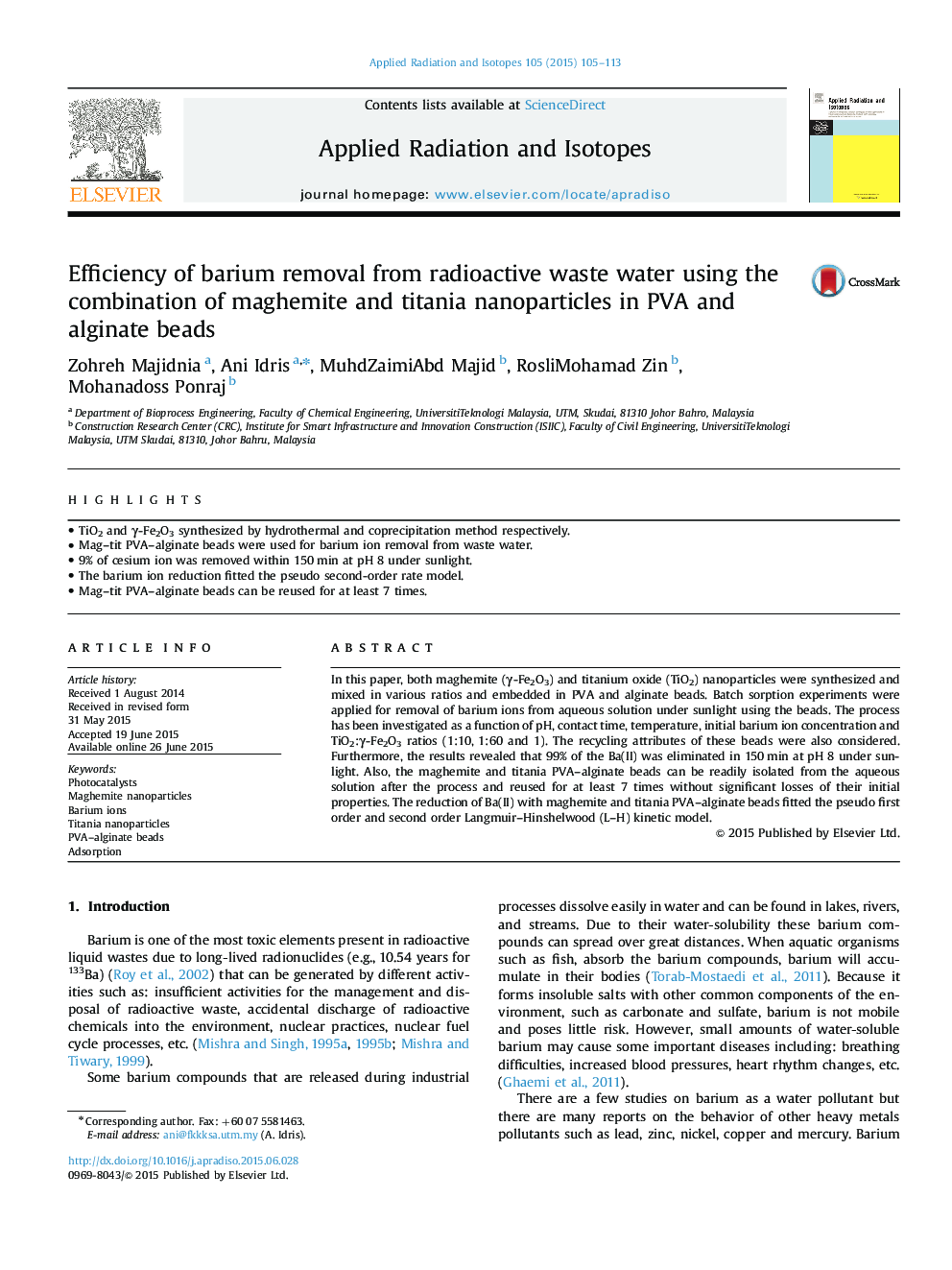| Article ID | Journal | Published Year | Pages | File Type |
|---|---|---|---|---|
| 1875846 | Applied Radiation and Isotopes | 2015 | 9 Pages |
•TiO2 and γ-Fe2O3 synthesized by hydrothermal and coprecipitation method respectively.•Mag–tit PVA–alginate beads were used for barium ion removal from waste water.•9% of cesium ion was removed within 150 min at pH 8 under sunlight.•The barium ion reduction fitted the pseudo second-order rate model.•Mag–tit PVA–alginate beads can be reused for at least 7 times.
In this paper, both maghemite (γ-Fe2O3) and titanium oxide (TiO2) nanoparticles were synthesized and mixed in various ratios and embedded in PVA and alginate beads. Batch sorption experiments were applied for removal of barium ions from aqueous solution under sunlight using the beads. The process has been investigated as a function of pH, contact time, temperature, initial barium ion concentration and TiO2:γ-Fe2O3 ratios (1:10, 1:60 and 1). The recycling attributes of these beads were also considered. Furthermore, the results revealed that 99% of the Ba(II) was eliminated in 150 min at pH 8 under sunlight. Also, the maghemite and titania PVA–alginate beads can be readily isolated from the aqueous solution after the process and reused for at least 7 times without significant losses of their initial properties. The reduction of Ba(II) with maghemite and titania PVA–alginate beads fitted the pseudo first order and second order Langmuir–Hinshelwood (L–H) kinetic model.
